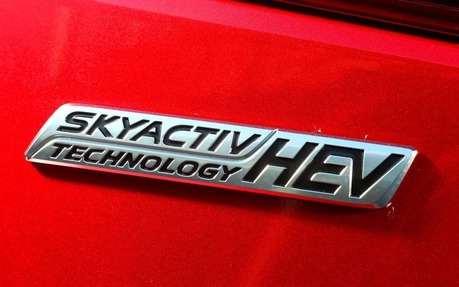Mazda2 EV and Mazda3 Hybrid: The Future According to Mazda
At the Tokyo Motor Show, Mazda lifted the veil off its upcoming projects. Takashi Suzuki, manager of the Drivetrain Development department at Mazda, announced an ingenious technological innovation: a range extender system.
The idea isn’t actually new, since Chevrolet offers something similar with the Volt, which uses a combustion engine to power a battery that feeds the electric motors. But at Mazda, it involves a much more innovative mechanical system that includes a rotary engine inserted inside a very compact unit. The range extender unit is located where you would normally find the fuel tank on the Demio (aka Mazda2). We had the chance to drive one of these revolutionary vehicles in the Yokohama region near Tokyo.
The return of the rotary
Mazda’s faith in the rotary engine has not wavered. Sure, they stopped using these engines for a while, but never really lost their love for them – as evidenced by the rotary gracing the range extender system. To be specific, Mazda engineers opted for a 330-cc horizontally mounted rotary. Not only is it very compact, but it doesn’t generate any vertical vibrations. It’s fitted with a belt drive system to rotate the generator at double speed and power the battery, which is first charged at a conventional outlet.
This system is housed in an independent unit that takes up roughly the same amount of space as a gas tank. This means that no major modifications had to be made to the car structure. With the range extender installed, there is almost as much trunk space available as in a conventional vehicle. Only one wire is needed to connect the rotary engine and generator to the batteries. The electric engine replaces the conventional engine under the hood.
Impressive!
We tested the Mazda2 EV with extended range over a short distance – less than 2 km – but that was enough to win me over. By pure luck, I actually drove a conventional Mazda2 just prior to going to Japan, which really helped me compare the two.
Operating in electric mode with three people on board, the car offered good accelerations and pick-up thanks to the electric mill’s generous torque. The road handling was very similar to the conventional version’s, with good balance on corners.
The engineers had essentially programmed the system so that the support engine would kick in during our test drive. We heard it start, though it was barely perceptible. The electric motor remained strong and the car kept rolling forward without even a hiccup.
Overall, the system impressed us with its compact size, ingenious single rotary-engine design, and 2:1 belt drive system to operate the generator. What is more, having the Range Extender installed does not entail any changes to the vehicle’s mechanical structure.
A Mazda3 hybrid!
Mazda also capitalized on the Tokyo Motor Show to introduce (for the first time in Japan) the new Axela, which we know as the Mazda3. It’s equipped with either a gas, diesel or compressed natural gas engine. But there’s also a new hybrid version. If you were hoping to buy one in the near future, however, prepare to be disappointed. Mazda brass have made it clear that it will not be available in Canada in the short or medium term.
The hybrid’s mechanical components are similar to Toyota technology, which Mazda obtained the rights to use. In fact, they are so similar that they even kept Toyota’s gear shifter that connects to the CVT, which the brands also share!
The car is powered by a Mazda 2.0-litre SKYACTIV engine. Its torque curve was modified for use in a hybrid vehicle. The batteries are nickel-metal hydride, just like at Toyota.
I was given the opportunity to drive the Mazda3 Hybrid over a distance of 10 kilometres. It was hard to find fault on the hybrid system, as it is identical to the one considered by many as the best on the market. The brake recovery system, however, seemed more progressive than the one on the Toyota models.
Mazda’s SKYACTIV technology was supposed to slash fuel consumption by more than 30%. At a technology conference last week, the company’s engineers discussed upcoming engines that will use this technology. SKYACTIV 2 will include a homogenous charge compression ignition, which has an 18:1 compression ratio – significantly higher than the 14:1 ratio currently used on most markets. What this means is that second-generation SKYACTIV engines will require very high quality fuel. And the higher compression ratio will facilitate combustion and reduce fuel consumption.
The third-generation SKYACTIV engine will be even more fuel efficient thanks to an adiabatic coating that will prevent heat increases or losses. Mazda engineers have kept mum about when these systems will be implemented.
The Hiroshima-based manufacturer is sticking to the development plan it established , with the first step being reducing fuel consumption for both gas and diesel engines. The second and third steps relate to SKYACTIV engines. There will also be hybrid and electric models. In fact, by 2020, the Mazda line-up will include fewer models with internal combustion engines and more hybrid and electric vehicles.
